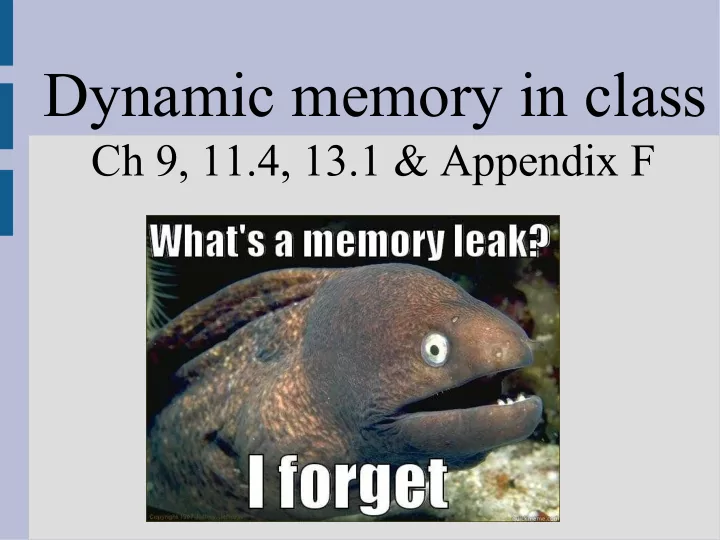

Dynamic memory in class Ch 9, 11.4, 13.1 & Appendix F
Review: constructors Constructors are special functions that have the same name as the class Use a constructor to create an instance of the class (i.e. an object of the blueprint)
Constructors + dynamic What if we have a variable inside a class that uses dynamic memory? When do we stop using this class? What do we do if the int* was private? (See: classMemoryLeak.cpp)
Constructors + dynamic Often, we might want a class to retain its information until the instance is deleted This means either: 1. Variable's scope ends (automatically deleted) oops out of scope = gone 2. You manually delete a dynamically created class with the delete command
Destructors Just as a constructor must run when a class is created... A destructor will always run when a class object/instance/variable is deleted Destructors (like constructors) must have the same name as the class, but with a ~: constructor destructor (See: classMemoryLeakFixed.cpp)
Destructors A good analogy is file I/O, as there are 3 steps: 1. Open the file (read or write) 2. Use the file 3. Close the file The constructor is basically requiring step 1 to happen Do you want #3 to be automatic or explicit?
Destructors The benefit of destructors is the computer will run them for you when a variable ends This means you do not need to explicitly tell it when to delete the dynamic memory, simply how it should be done This fits better with classes as a blueprint that is used in other parts of the program (see: destructor.cpp)
Recommend
More recommend